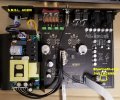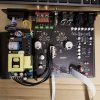pfgiv
Member
- Joined
- Nov 30, 2021
- Messages
- 68
- Likes
- 36
yes, that’s pretty much my point. Bias plays a large role in one’s subjectivity, ergo, why I asked if you have blind AB samples these class D amps against others neutral, low sinad, powerful enough amps regardless of which topology class they are. Remember, you made a claim saying that all cheap class D amps have a problem in the mids.Your claim (if true) would turn every reviewer of High End gear into a blatant liar as they describe (subtle) differences in sound when reviewing and comparing amps (and speakers etc).
Plenty of people say X type of amp sounds like this and Y type of amp sounds like that. But in blind tests they can’t tell the difference or get things wrong.
Speakers are a different category because they literally produce the sound you’re hearing. They will sound different.
This is an industry with a lot of money involved. Does it really seem improbable that people make wild claims that don’t hold up under scientific scrutiny? Check out the link below.
Read the first reply here





